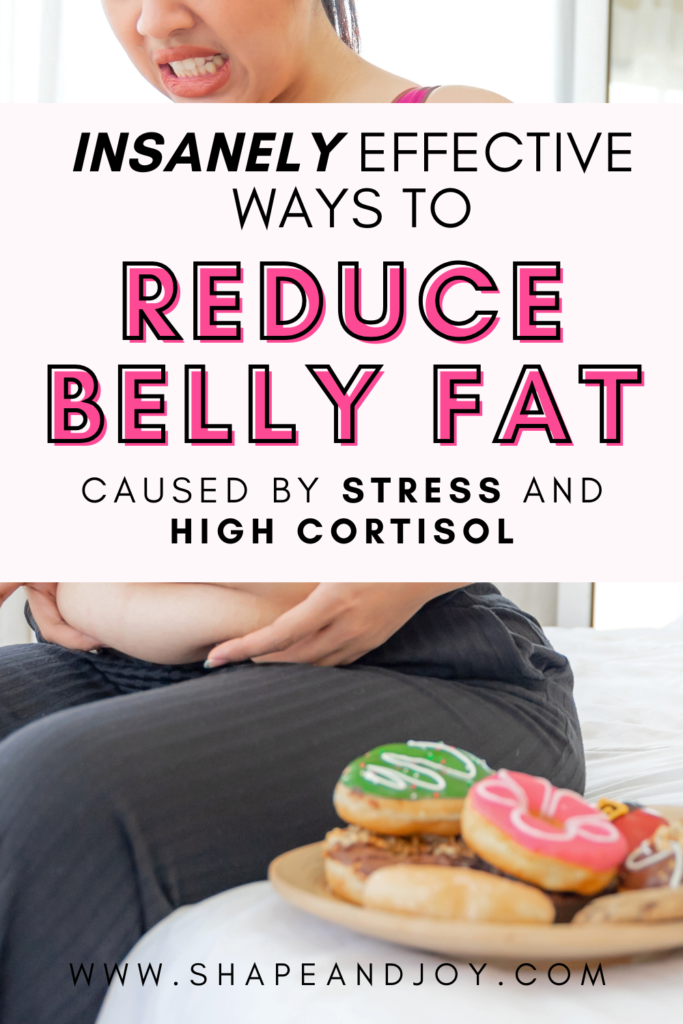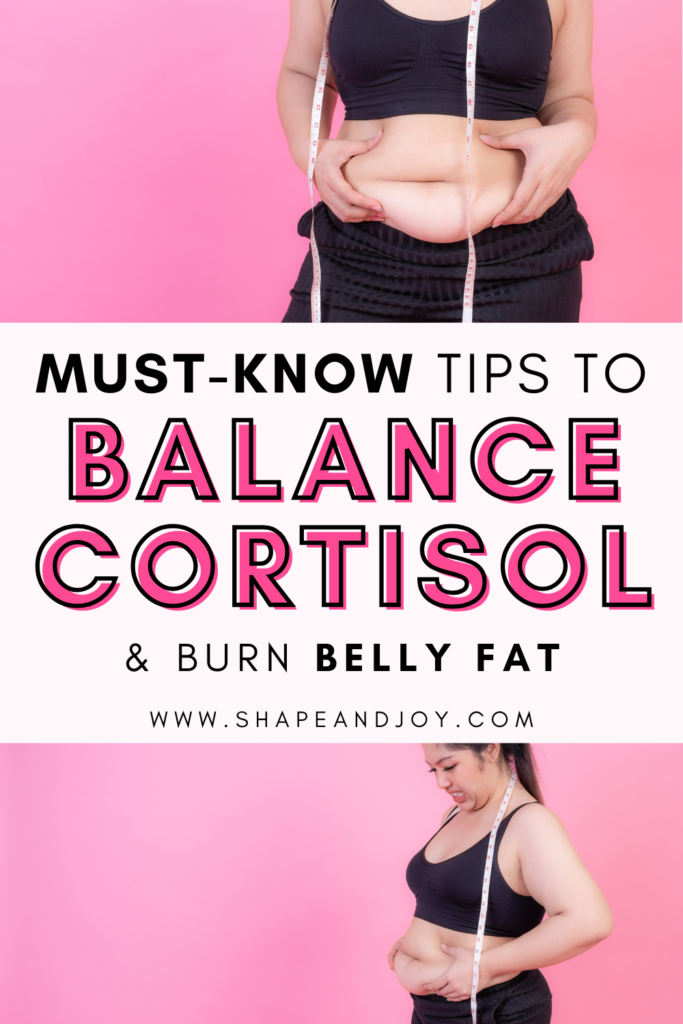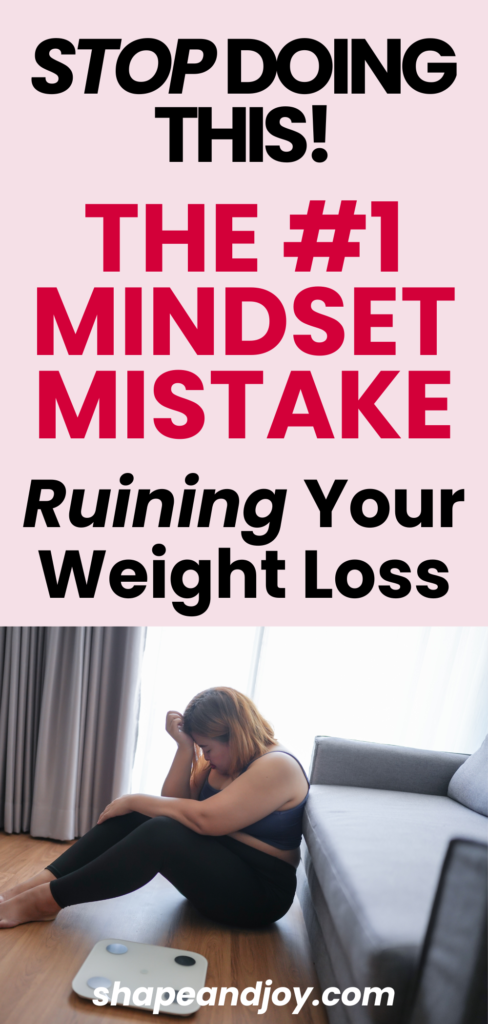Get Rid of Stress Belly: Practical Tips

Get Rid of Stress Belly: Science-Backed Ways to Reduce Cortisol & Burn Belly Fat
Alright, love, let’s get straight to it—stress belly is a real thing. If you’ve been eating well, moving your body, and still wondering why your midsection isn’t budging, your cortisol levels could be the culprit.
Chronic stress triggers cortisol spikes, and when that happens, your body stores fat right around your belly. Annoying? Yes. Fixable? Also yes. But here’s the thing: no amount of crunches or detox teas will get rid of it—you need to focus on lowering cortisol and balancing your hormones first.
So, in this post, I’ll cover:
- Why stress leads to belly fat storage (spoiler: it’s not just about calories)
- How to balance cortisol levels naturally
- Science-backed ways to reduce stress belly without extreme dieting
Let’s go.
- Why Stress Belly Happens (Even If You’re Doing Everything “Right”)
- Balance Blood Sugar to Keep Cortisol in Check
- Prioritise Sleep (Because a Tired Brain = More Belly Fat)
- Train Smart (Because Too Much HIIT Can Backfire)
- Manage Stress Without Emotional Eating
- Try Science-Backed Supplements That Help Reduce Cortisol
- How to Reduce High Cortisol Levels for Good!
- Final Thoughts: You Can Get Rid of Stress Belly Without Starving Yourself
Why Stress Belly Happens (Even If You’re Doing Everything “Right”)
Your body isn’t out to sabotage you—it’s wired for survival. When stress levels stay high, your body thinks it’s in danger and holds onto fat as an energy reserve. And guess where it likes to store that extra energy? Right around your belly.
Here’s why:
- Cortisol increases fat storage, especially in the abdominal area
- High cortisol keeps insulin elevated, making it harder to burn fat
- Chronic stress slows metabolism, so you burn fewer calories at rest
- Cortisol can lead to overeating, but even if you’re eating normally, it can still cause weight gain
And just to make things more fun (sarcasm), even if you lose weight overall, a stubborn stress belly can hang on if cortisol isn’t managed.
But don’t worry—we’re not here to accept our fate. Let’s fix this.
Balance Blood Sugar to Keep Cortisol in Check
If your diet looks like a rollercoaster of sugar highs and crashes, your cortisol is probably working overtime trying to keep up. Every time your blood sugar spikes and crashes, your body pumps out more cortisol, making stress belly worse.
Here’s how to fix cortisol levels naturally with food:
- Start your day with a protein-packed breakfast. Swap the toast-only breakfast for eggs, Greek yogurt, or a protein smoothie
- Pair carbs with protein and fat. This slows digestion, stabilises blood sugar, and keeps cortisol balanced
- Eat regularly. Long gaps between meals lead to cortisol spikes. Aim for balanced meals every 3-5 hours
Try this: Instead of grabbing a sugary snack, go for almonds and dark chocolate. They’re rich in magnesium, which helps lower cortisol naturally.

Prioritise Sleep (Because a Tired Brain = More Belly Fat)
Bad sleep and belly fat go hand in hand. Poor sleep skyrockets cortisol, increases cravings, and slows metabolism. If you’ve ever woken up exhausted and spent the whole day ravenous and craving junk food, that’s cortisol and sleep deprivation teaming up against you.
Here’s how to reduce high cortisol levels at night:
- Create a wind-down routine—dim the lights, avoid screens, and relax before bed
- Take magnesium before bed—it lowers cortisol and helps you sleep deeper
- Avoid late-night stress—scrolling emails or having heated debates before bed doesn’t help
Try this: If you wake up between 2-4 AM, it could be a cortisol spike caused by low blood sugar. A small protein and carb snack before bed, like Greek yogurt and berries, can help.
📌 Pin this for later! ⬇

Train Smart (Because Too Much HIIT Can Backfire)
Exercise is amazing for fat loss, but if you’re smashing high-intensity workouts every day, you might be making stress belly worse.
Too much intense exercise raises cortisol. When your body is constantly in fight-or-flight mode, it holds onto fat instead of burning it.
- Focus on strength training. Lifting weights helps lower cortisol and build lean muscle
- Prioritise low-impact movement. Walking, yoga, or Pilates lower stress and improve fat loss
- Save HIIT for 1-2 times per week, not every day
Try this: Swap one of your HIIT workouts for a 30-minute walk outdoors. It’s scientifically proven to reduce cortisol and promote fat loss.
Manage Stress Without Emotional Eating
If stress automatically equals snacks, you’re not alone. Cortisol increases hunger hormones, making it harder to tell the difference between real hunger and stress cravings.
Instead of reaching for food when stress hits, try these cortisol-lowering hacks instead:
- Deep breathing exercises. Just five deep breaths can lower cortisol instantly
- Get outside. Natural light and fresh air help lower stress hormones fast
- Essential oils. Lavender, chamomile, and sandalwood are proven to lower cortisol naturally
Try this: Next time a craving hits, drink a glass of water and take five deep breaths first. You’ll be surprised how often it’s stress, not actual hunger.

Try Science-Backed Supplements That Help Reduce Cortisol
Sometimes, food and lifestyle tweaks aren’t enough, and that’s where supplements can help. Cortisol imbalance supplements have been shown to reduce stress belly by lowering cortisol and improving fat metabolism.
Discover the best cortisol-lowering supplements for belly fat loss, here.
How to Reduce High Cortisol Levels for Good!
If stress has been running the show—messing with your energy, cravings, and waistline—it’s time to take back control. This series is all about lowering cortisol naturally, stopping stress-driven weight gain, and helping you feel like yourself again.
Explore the full series:
- Cortisol Diet 101: The Best Foods to Reduce Stress Hormones – The ultimate guide to eating for lower cortisol and better health.
- Signs of High Cortisol in Women: Symptoms, Causes & How to Fix It – Spot the warning signs and learn how to restore balance.
- 25 Amazon Products to Lower Cortisol & Reduce Stress Naturally – Easy lifestyle upgrades to help keep stress hormones in check.
- Cortisol Regulation Routine: Morning & Night Habits to Lower Stress – Daily habits to naturally reduce high cortisol levels.
- The Best Supplements to Lower Cortisol & Restore Balance – Science-backed vitamins and herbs to help fix cortisol levels.
- Cortisol & Emotional Eating: How to Stop Stress Cravings & Prevent Weight Gain – Focuses on how cortisol affects appetite and cravings, making it harder to stop snacking and leading to weight gain. Learn how to manage stress eating and regain control of your hunger.
- Get Rid of Stress Belly: Science-Backed Ways to Reduce Cortisol & Burn Belly Fat (You’re here!) – Explores why cortisol leads to belly fat storage, even if you’re eating well. Learn how to target stress belly with cortisol-balancing foods, exercise, and lifestyle shifts.
Final Thoughts: You Can Get Rid of Stress Belly Without Starving Yourself
The truth is, stress belly isn’t just about calories—it’s about hormones. If you focus on:
- Balancing blood sugar with protein, fat, and fibre to keep cortisol stable
- Getting better sleep because sleep loss increases belly fat
- Training smart instead of punishing yourself with too much cardio
- Managing stress without using food as a coping mechanism
- Using the right supplements, like magnesium and ashwagandha
Then you can finally lose that stubborn stress belly without crazy diets or hours of cardio.
📌 Pin this for later! ⬇






